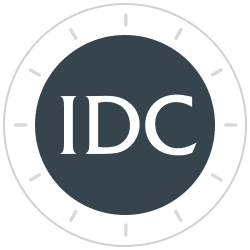Evaluating Banks with Return on Equity Capital
The objective of management of a bank is to earn a return on equity (ROE) that is greater than its cost of equity capital, therefore adding value to the common shareholder’s investment.
As part of our CAMEL ratio analysis, IDC Financial Publishing (IDCFP) calculates the Net Operating Profit (After Tax) Return on Equity (NOPAT ROE) to provide the best measure of an institution’s performance. In bank holding companies, commercial banks and savings institutions, this NOPAT ROE is defined as net operating profit available to common stockholders divided by the average of common stockholder’s tangible equity capital plus the loan loss reserve.
The cost of equity capital, as defined by IDCFP is the long bond yield, plus 50% of that bond yield, adjusted for a bank’s risks factors. These risk factors include:
- Operating profit coverage of net loan charge-offs
- Variability of the operating profit margin
- Amount of Tier 1 capital adjusted to reflect loan delinquency less the loan loss reserve
- Level of financial leverage
ROEA + ROFL = NOPAT ROE
The unique components of IDCFP’s NOPAT Tangible ROE are the operating returns, or ROEA, and the financial returns, or ROFL. Adding these together equals the NOPAT ROE.
- Return on earning assets (ROEA) equals the return that the bank earns before any interest expense on the debt it has invested in loans, securities, cash equivalents, and other earning assets.
- The bank’s return on financial leverage (ROFL) reflects both the degree to which the bank uses debt to finance its operating strategy and the cost of this debt.
Components of IDC’s NOPAT ROE Equation
Return on Earning Assets (ROEA): The first component of NOPAT ROE, operating return on earning assets, is the net operating profit after tax, as a percentage of earning assets. It is the interest income from loans and investments plus noninterest income, less operating expense and loan loss expense (excluding gain or loss on the sale of non-loan assets), less the applicable taxes. Also, ROEA adds back the increase in the loan loss expense but subtracts the difference between charge-offs and recoveries to reflect cash accounting. This amount is then divided by average earning assets and calculated as a percentage.
Return on Financial Leverage (ROFL): The second component of NOPAT ROE is return on financial leverage. ROFL is calculated by multiplying the leverage spread by the leverage multiplier.
Leverage Spread: The leverage spread equals the return on earning assets (ROEA) less the cost of adjusted debt, both after tax. The leverage spread is multiplied by the leverage multiplier to calculate ROFL.
Leverage Multiplier: The leverage multiplier is defined as the ratio of adjusted debt to adjusted equity. Adjusted debt equals earning assets before reserves, less both tangible equity capital and the loan loss reserve. Adjusted equity equals common shareholder’s tangible equity capital plus the loan loss reserve.
A Tool to Improve Return on Equity
IDC’s NOPAT ROE equation is a tool that helps management better understand the relationships between operating strategy (ROEA) and financial strategy (ROFL). ROEA and ROFL are also best analyzed when comparing the bank’s ratios to those of its peers. The equation provides management with the “big picture,” allowing for the best mix of operating effectiveness and cost of financial leverage to determine optimal value-added ROE.
To view our products and services please visit our website at www.idcfp.com . For more information about our CAMEL ratings, or for a copy of this article, please contact us at 800-525-5457 or info@idcfp.com.
John E Rickmeier, CFA, President, jer@idcfp.com
Robin Rickmeier, Marketing Director
